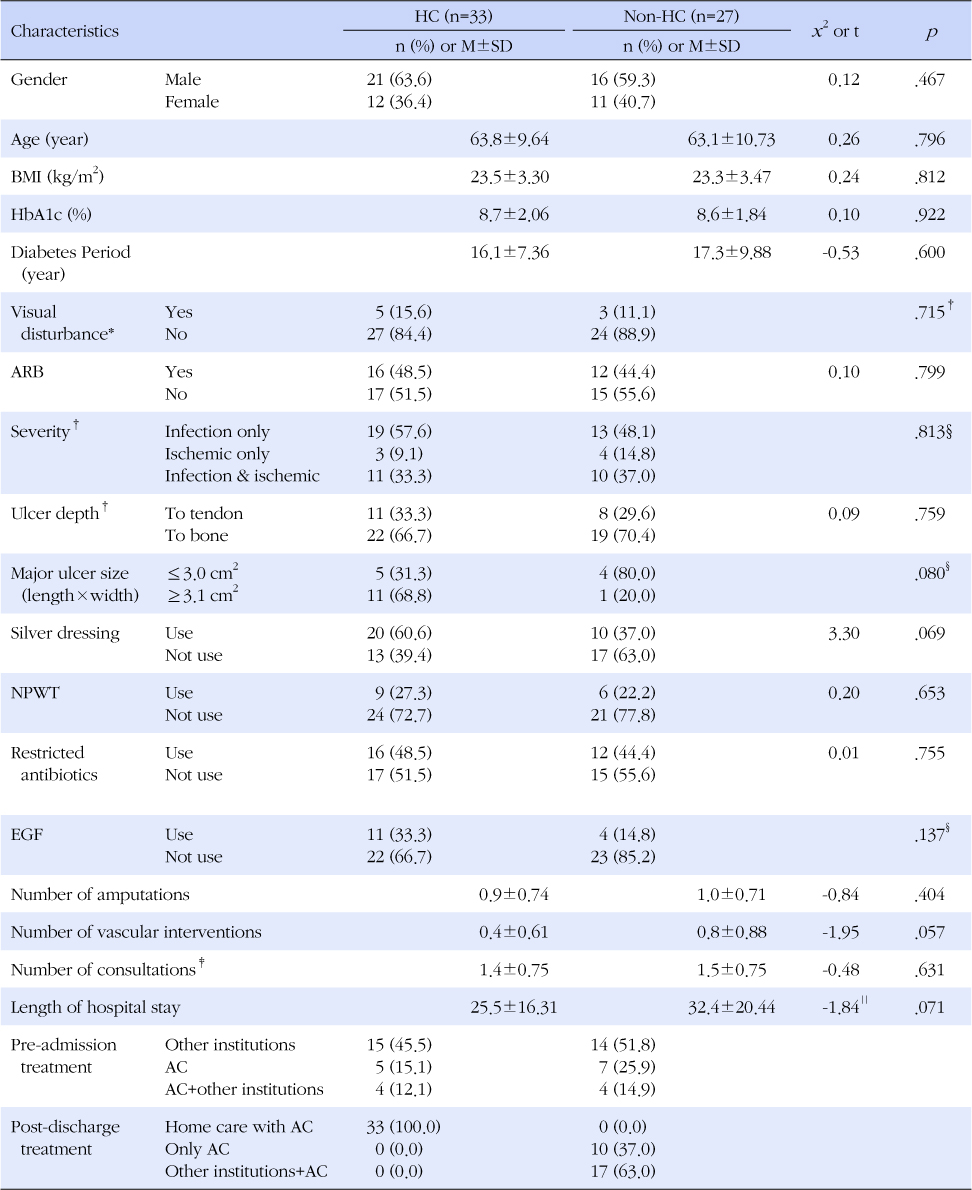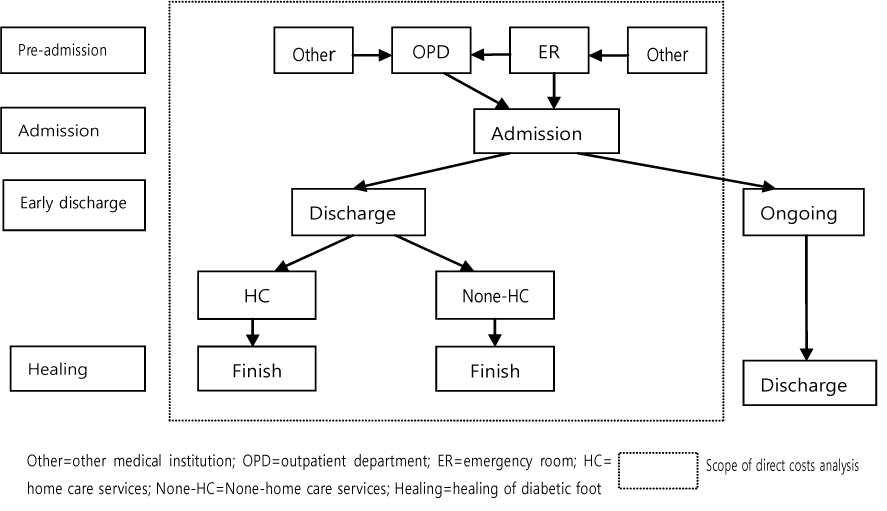1Department of Nursing, Ajou University Hospital, Korea.
2College of Nursing, Ajou University, Korea.
3College of Nursing, Seoul National University, Korea.
Copyright © 2013 Korean Academy of Nursing Administration
This article is a condensed form of the first author's doctoral dissertation from Ajou University.

HC=Home Care Services Group; Non-HC=Non-Home Care Services Group; ARB=Antibiotic-Resistant Bacteria; NPWT=Negative Pressure Wound Therapy; EGF=Epidermal Growth Factors; AC=Ambulatory Care.
*Missing data excluded; †Texas university diabetic wound classification system; ‡Multiple responses; §Fisher's exact test; ∥Transforming data by natural log.


Test of Homogeneity of Characteristics between Groups (N=60)
HC=Home Care Services Group; Non-HC=Non-Home Care Services Group; ARB=Antibiotic-Resistant Bacteria; NPWT=Negative Pressure Wound Therapy; EGF=Epidermal Growth Factors; AC=Ambulatory Care.
*Missing data excluded; †Texas university diabetic wound classification system; ‡Multiple responses; §Fisher's exact test; ∥Transforming data by natural log.
Comparison of Direct Service Costs between Groups (Unit: Won, N=60)
HC=Home Care Services Group; Non-HC=Non-Home Care Services Group.
*Missing data excluded; †Transforming data by natural log.
Comparison of Cost-effectiveness Ratio between Groups (N=60)
HC=Home Care Services Group; Non-HC=Non-Home Care Services Group.
Factors Affecting Direct Service Costs (N=60)
*Transforming data by natural log.
Sensitivity Analysis (N=60)
Length=Length of Hospital Stay; Cost=Other Medical Costs; Duration=Duration to Cure; HC=Home Care Services Group; Non-HC=Non-Home Care Services Group; C=Cost; E=Effectiveness; C/E=Cost-effectiveness Ratio.
HC=Home Care Services Group; Non-HC=Non-Home Care Services Group; ARB=Antibiotic-Resistant Bacteria; NPWT=Negative Pressure Wound Therapy; EGF=Epidermal Growth Factors; AC=Ambulatory Care. *Missing data excluded; †Texas university diabetic wound classification system; ‡Multiple responses; §Fisher's exact test; ∥Transforming data by natural log.
HC=Home Care Services Group; Non-HC=Non-Home Care Services Group. *Missing data excluded; †Transforming data by natural log.
HC=Home Care Services Group; Non-HC=Non-Home Care Services Group.
*Transforming data by natural log.
Length=Length of Hospital Stay; Cost=Other Medical Costs; Duration=Duration to Cure; HC=Home Care Services Group; Non-HC=Non-Home Care Services Group; C=Cost; E=Effectiveness; C/E=Cost-effectiveness Ratio.